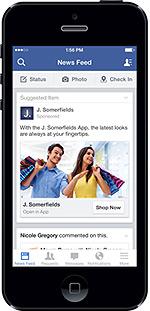
The mobile
banner has long been a subject of scorn, annoying users by crowding the smartphone screen and frustrating advertisers with their creative limitations. It looks like marketers are indeed cooling on
mobile banners, and mobile advertising more broadly, according to the CMO Council’s annual State of Marketing global benchmarking study.
As reported this week by MediaPost’s "Marketing Daily," the survey of 525 senior marketing executives from around the
world (half from North America) found that fewer planned to increase mobile budgets over than next 12 months than last year. In 2013, almost two-thirds (62%) said they planned mobile budget increases,
and a quarter projected increases of more than 5%.
advertisement
advertisement
This year, about half (48%) said they expected no change in spending on mobile SMS, and 45% expected no change for mobile banners. A third
plan to raise mobile banner spending by up to 5%, and 27% will do the same in mobile SMS. But only 15% and 17%, respectively, plan to boost mobile banner and SMS budgets by more than 5%.
The
study also showed that marketing executives placed methods like search, events and trade shows and social media as more effective ways to raise brand awareness and generate demand than others
including mobile search and mobile advertising.
The results are not exactly a ringing endorsement for mobile advertising, and seem to stand in contrast to the surge in spending in the
category. The Interactive Advertising Bureau estimates that global spending on mobile advertising last year nearly doubled to $19.3 billion, including $8.1 billion in North America. eMarketer projects
that U.S. mobile ad spend will hit $17.7 billion this year.
One thing the CMO Council survey may not reflect is the growing overlap between social and mobile. Facebook now gets about 60% of
its ad revenue from mobile ads, and Twitter, about 81%. So the in-stream ad units in Facebook, Twitter or Instagram that brands and agencies may be turning to as an alternative to mobile banners still
end up being mobile advertising.
The same goes for the rise of messaging apps like Snapchat, Kik, Line or Viber that merge mobile and social elements and also encroach on the turf of mobile
SMS and traditional banners. As these newer platforms develop and expand their ad options, marketers will end up paying for ads appearing on mobile devices.
For publishers seeing their traffic
migrate to smartphones and tablets, the shift away -- not only from the desktop, but from the 320 x 250 mobile banner -- obviously presents a problem. That was highlighted Tuesday by Megan Hughes,
director of product, mobile, at Orbitz Worldwide, who noted at MediaPost’s Mobile Insider Summit that the travel site is grappling with how to monetize its fast-growing mobile traffic.
That’s something Orbitz and other publishers will have to figure out -- experimenting with different approaches and formats, to keep advertisers from diverting more spending to social and
messaging platforms that have found success with in-stream ad options better suited to the limited real estate of smartphone screens.